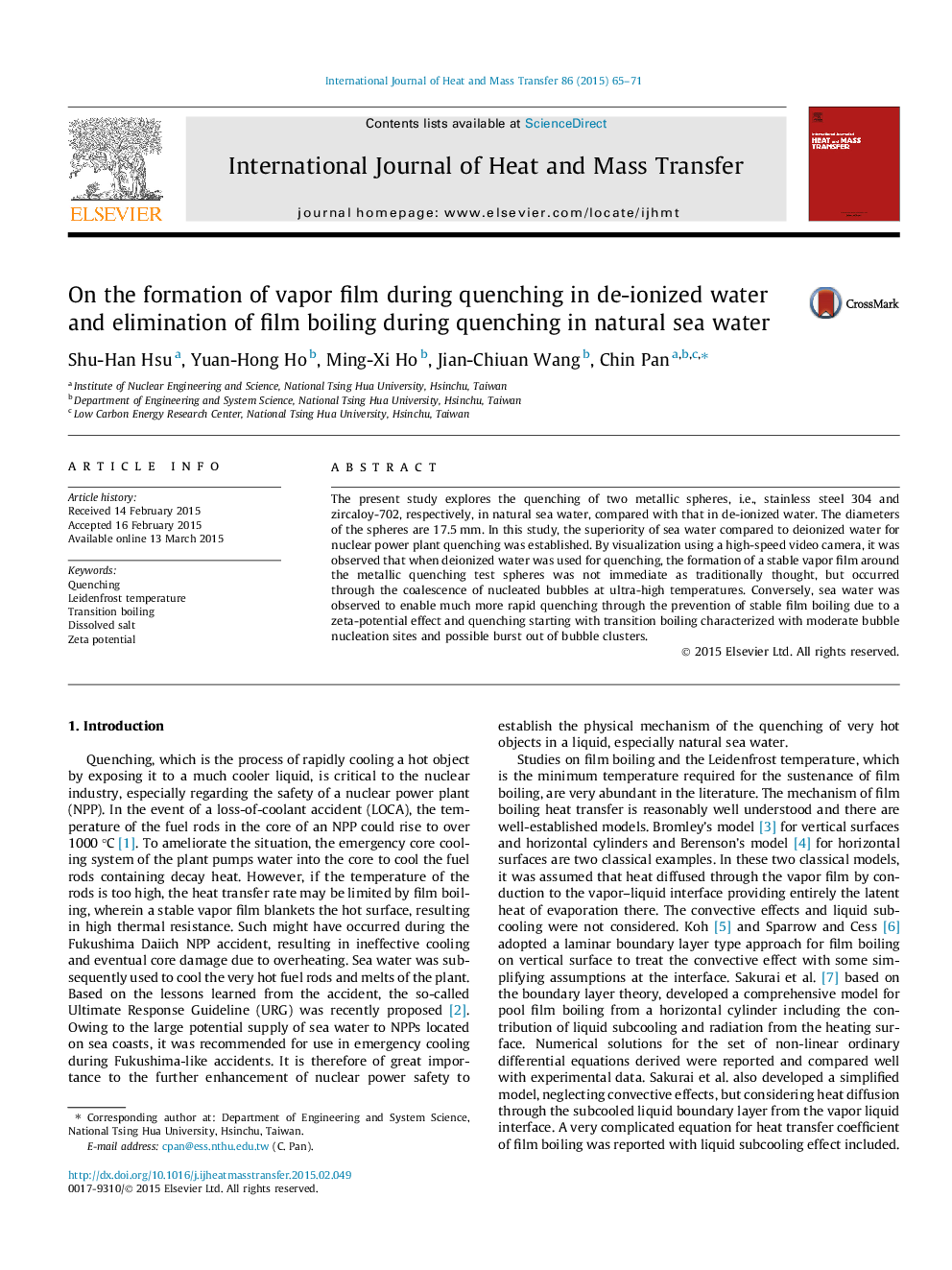| Article ID | Journal | Published Year | Pages | File Type |
|---|---|---|---|---|
| 656717 | International Journal of Heat and Mass Transfer | 2015 | 7 Pages |
The present study explores the quenching of two metallic spheres, i.e., stainless steel 304 and zircaloy-702, respectively, in natural sea water, compared with that in de-ionized water. The diameters of the spheres are 17.5 mm. In this study, the superiority of sea water compared to deionized water for nuclear power plant quenching was established. By visualization using a high-speed video camera, it was observed that when deionized water was used for quenching, the formation of a stable vapor film around the metallic quenching test spheres was not immediate as traditionally thought, but occurred through the coalescence of nucleated bubbles at ultra-high temperatures. Conversely, sea water was observed to enable much more rapid quenching through the prevention of stable film boiling due to a zeta-potential effect and quenching starting with transition boiling characterized with moderate bubble nucleation sites and possible burst out of bubble clusters.
